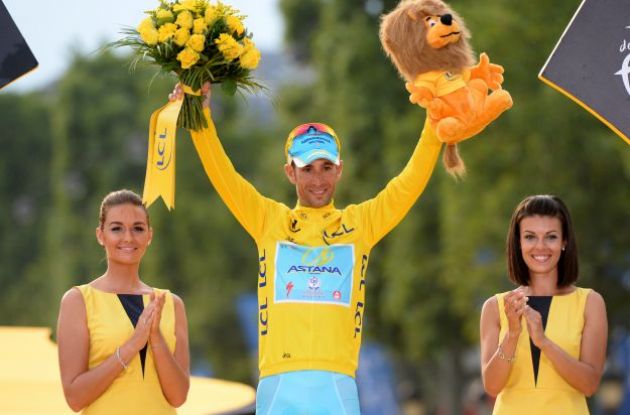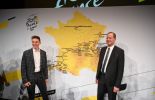2015 Tour de France Preview and Predictions
The 2015 Tour de France will be a climber’s Tour. The more than 3,000-km-long race will feature seven mountain stages with five summit finishes. In addition, La Grande Boucle will have one stage with pave that wreaked havoc last year. This year’s Tour parcours is not a classic one. Only a strong climber, someone who can also hold his own on classics courses, will have a chance to win.
The Tour will begin in Utrecht, the Netherlands. Stage 1 will be a flat, 13.8-km individual time trial. This stage will be the race’s only individual time trial. Its shortness will make excellent climbers but poor time trialists such as Joaquim Rodriguez (Katusha) and Thibaut Pinot (FDJ) happy. They will have less difficulty limiting their losses than in a longer race of truth.
Stage 2 will be a pancake-flat, 166-km run from Utrecht to Zeeland. Predicting a sprint finish will be easy, but the winds blowing off of the North Sea could cause the field to split and form echelons. A contender who is not alert could find himself out of the running when the Tour has barely begun. Look for a classics man to take this stage.
Stage 3 will take the field to Belgium. The hilly, 157-km ride from Antwerp to Huy will take the riders up four categorized climbs. The stage will end with an ascent of the Mur de Huy, which La Fleche Wallonne has made famous. This is another stage that a classics man will take.
The first French stage of the Tour will be Stage 4. The 221.5-km run from Seraing, Belgium to Cambrai, France will feature seven sections of pave totaling 13.3 km. The cobbles will not do as much damage as they did last year, but they will create gaps. Look for a classics man to make it three in a row.
Stage 5 will be the first stage to be ridden entirely in France. The 189-km run from Arras to Amiens will be technical, with lots of twists and turns. This could make for crashes. A sprinter should win the stage, perhaps against a reduced field as a result of spills.
Stage 6, a 191.5-km ride from Abbeville to Le Havre, is likely to favor puncheurs as opposed to pure sprinters. The course will be rolling and will have a number of uncategorized climbs, along with an uphill finish. It will favor riders such as the Orica-GreenEdge duo of Michael Matthews and Simon Gerrans as well as John Degenkolb (Giant-Alpecin).
Stage 7 will be a sprinter’s paradise. The 190.5-km run from Livarot to Fougeres will be rolling but with a flat finish that will suit the likes of Mark Cavendish (Etixx-Quick Step) or Andre Greipel (Lotto-Soudal).
Stage 8, a 181.5-km ride from Rennes to Mur de Bretagne, will end with a Category 3 ascent to the finish. A puncheur such as Degenkolb, Matthews or Gerrans should take this stage, in which the field should stay together until the final climb.
Stage 9 will be the 2015 Tour’s first test of team strength. The rolling, 28-km ride from Vannes to Plumelec will have an uphill finish. Teams with GC aspirations such as Sky, BMC, Astana, Tinkoff-Saxo Bank, and Movistar will assert themselves to position their captains for battle in the Pyrenees, which will follow the rest day that will follow this stage.
Stage 10 will have four categorized climbs, but three of them will be Category 4s, mere pimples. The last climb, however, will be the first fight among the contenders. It will be the hors categorie ascent to the finish. Look for Chris Froome (Sky), Alberto Contador (Tinkoff-Saxo Bank), Nairo Quintana (Movistar), and defending champion Vincenzo Nibali (Astana) to mark each other and try to take time out of each other at the finish. A climber such as Thibaut Pinot (FDJ) exploit the heads of state’s attention to each other to snare the stage.
The riders will endure more pain in the next stage. Stage 11, a 188-km ride from Pau to Cauterets, will take the field over the Category 1 Col d’Aspin and the hors categorie Col du Tourmalet before the riders tackle the Category 3 ascent to the finish. The descent from the Tourmalet could see good descenders such as Nibali and Romain Bardet (Ag2r-La Mondiale) attempt to steal time from the competition.
The final Pyrenean stage will be Stage 12. The field will take on four categorized climbs, the Category 2 Col de Portet d’Aspet, the Category 1 Col de la Core and Port de Lers, and the hors categorie climb to the finish. The stage could see one of the GC squads taking control of the race on the approach to the Port de Lers at the latest to set its man up for the fight on the final ascent.
Stage 13, a transitional stage, will be a 198-km dash from Muret to Rodez. It will end with an uphill finish, so pure sprinters will not take this one. Degenkolb, Gerrans, Matthews, or Peter Sagan (Tinkoff-Saxo Bank) should take this one.
The following stage will be one for a breakaway. Stage 14, a 178.5-km ride from Rodez to Mende, will see the field tackle four categorized climbs, including two Category 2s in the last 35 km. It adds up to an individual or a small group jumping away from the field for the win. If the peloton is indulgent enough, the winning break might form early in the stage.
Stage 15 is a stage for pure sprinters. The 183-km run from Mende to Valence will feature four categorized climbs, but none will be tougher than a Category 2, and that climb will summit nearly 60 km from the finish. A long, flat run home will ensure that a pure sprinter will win.
The next stage will take the field to the foothills of the Alps. The 201-km ride from Bourg-en-Peage to Gap will feature two Category 2 ascents, the second of which will summit 12 km from the finish. Stage 16 will present an opportunity for escapees to jump away from the field. The Tour’s second rest day will follow the stage.
Stage 17, which will be a 161-km travail from Digne-les-Bains to Pra-Loup, will have the same parcours as Stage 5 of this year’s Dauphine Libere. After going over two Category 3 ascents and a Category 2 climb, the field will tackle the Category 1 Col d’Allos. At the base of the descent, the riders will begin the Category 2 climb to the finish. Bardet, a good descender, won that stage of the Dauphine Libere by attacking on the descent, and another good descender, Nibali is a good bet to attempt a repeat performance.
Stage 18, a rugged, 186.5-km ride from Gap to Saint-Jean-de-Maurienne, will feature seven categorized climbs, the most important of which will be the hors categorie Col du Glandon and the Category 2 Lacets de Montvernier. After the descent from the former, the field will take on the latter, which summits 10 km from the finish line. Expect a breakaway on the Lacets de Montvernier to win the stage.
Stage 19, a 138-km ride from Saint-Jean-de-Maurienne to La Toussuire, will be a standing shaker. The riders will go over the Category 1 Col du Chaussy, the hors categorie Col de la Croix de Fer, and the Category 2 Col du Mollard before taking on the hors categorie climb to the finish. The stage will be epic, as will the fight for the yellow jersey on the day’s last climb.
The last opportunity to seize the yellow jersey or move up on GC will be Stage 20. Originally, this stage was planned to go over the Col du Galibier, but avalanches and landslides have forced the race organizers to reroute the parcours. The 110.5-km ride from Modane Valfrejus to L’Alpe d’Huez will take the riders over the Col de la Croix de Fer again before sending them up L’Alpe d’Huez. Expect fireworks on the Alpe.
Stage 21 will be the traditional procession for the winner. The flat, 107.5-km ride from Sevres to Paris will begin at a relaxed pace and will be filled with hijinks, photo ops, and champagne. When the field reaches Paris, however, the pace will quicken. The riders will make 10 passages of the Champs Elysees before the finish, which will probably be a bunch sprint. This stage will be a last chance for sprinters to win a stage and for riders to sort out the green jersey competition.
Who will win the Tour de France? This year’s Tour is the most wide open in years. There are at least four potential winners. Two of them go to the head of the class: Chris Froome (Sky) and Alberto Contador (Tinkoff-Saxo Bank). Froome had had a quiet spring until the Dauphine Libere, which he won, taking two mountain stages in the process. The Briton is in peak form, he is the world time trial, champion, and he has a strong supporting cast. He has expressed misgivings about the first week, which grand tour riders always do, but if the Sky man can avoid mishaps on the cobbles or asphalt, and if he can avoid being on the wrong side of wind-created field splits, he stands an excellent chance of winning the Tour. Pencil him in for first.
Contador had had a quiet spring until the Giro d’Italia. Despite having a crisis on the race’s penultimate stage, the Spaniard dominated the race. He was the overall leader for every stage but one after Stage 5. The Tinkoff-Saxo Bank man then won the Route du Sud. Contador is ready for the Tour, although questions remain as to whether he is fully recovered from the Giro. A major question mark is his team. At the Giro, the Russian squad was expected to help Contador win. On a number of occasions, however, Contador was isolated while Astana and other teams made moves. He will need a better showing from his teammates if he is to win the Tour.
Defending champion Nibali is a very good time trialist and an equally good climber. His successful defense of his Italian road race championship indicates that he is in good form. He will have a strong squad to assist him. The Italian will bring different skills from the other Tour contenders. He descends well, and as the Shark of Messina demonstrated in Stage 5 of last year’s Tour, he can handle the cobbles. The Astana man will not repeat as champion, but he will ride well enough to return to the podium.
Nairo Quintana (Movistar) made waves with his runnerup finish in the 2013 Tour, and he burnished his reputation with his victory in the 2014 Giro d’Italia. The Colombian is not as good a time trialist as Froome, Contador, and Nibali, but because this year’s individual time trial will be short, he should have little trouble limiting his losses. Quintana’s climbing ability speaks for itself, and his team should provide him with ample support in the mountains, although whether it can shepherd him through the first week remains to be seen. The Movistar man will contend strongly for a podium spot.
Thibaut Pinot (FDJ) has gotten over the fear of descents that led to his disastrous 2013 Tour. Last year, the Frenchman finished third and revived French hopes that he will be the first Frenchman to win the Tour since Bernard Hinault in 1985. He won a stage of the Dauphine Libere and showed that he is fit. However, FDJ is not a strong team time trial squad, so Pinot will lose time there. His team generally is not as strong as those of the other heads of state, and Pinot is an indifferent racer against the clock, which will put pressure on him to limit his losses in the individual time trial. Expecting Pinot to reach the podium again is too much to hope for, but he will acquit himself well enough in the mountains to finish in the top six.
Tejay van Garderen (BMC Racing Team) appears to be fitter than he was last year, and he has a world championship team time trial squad behind him. However, the American is prone to having un jour sans, and that will keep him off of the podium. He should do well in the individual time trial, and a solid performance by BMC in the team time trial might put him near the yellow jersey in Stage 9. The other contenders are consistently better climbers, however, and that fact should keep the BMC man out of the top five.
Romain Bardet (Ag2r-La Mondiale) will be among the leaders of the white jersey competition. He is a good climber and a good descender, as his performance in Stage 5 of the Dauphine Libere shows. The Frenchman finished sixth in last year’s Tour de France and is expected to compete for the white jersey again this year, although Quintana is expected to win the competition.
In 2013, Andrew Talansky (Cannondale-Garmin protected by POC) finished 10th in his Tour debut. Last year, he won the Dauphine Libere but abandoned the Tour de France with crash injuries. This season, the American has won his country’s time trial championship and finished 10th in the Dauphine Libere. Talansky can stay with the best on most climbs while riding capably against the clock. The Cannondale-Garmin man’s all-around skills should enable him to ride consistently enough to finish in the top 10.
Check in at www.roadcycling.com for daily reports and other news from the Tour de France!
Order the gear you need for summer in our bike shop and subscribe to our training tracker service to track, plan and analyze your training and nutrition. Pro cyclists from Sky Pro Cycling, Orica GreenEdge and Tinkoff-Saxo use our training tracker to win professional races: Sign up now.








